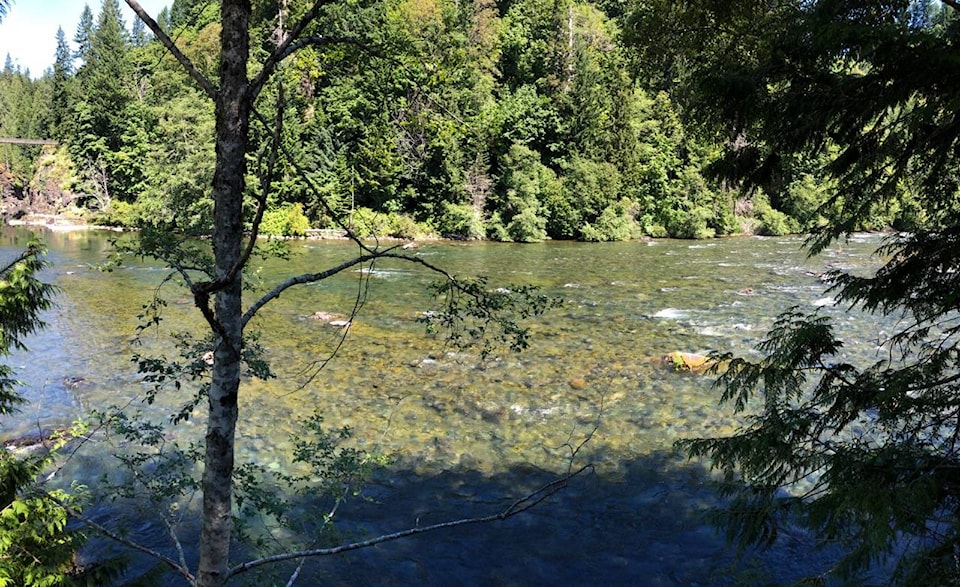Chinook salmon in the Campbell River are going to get improved spawning grounds thanks to a gravel replacement project.
The project is to replace 1,400 square metres of poor spawning gravel in the river with ideally-sized gravel. The A-Tlegay Fisheries Society is made up of representatives from the We Wai Kai, We Wai Kum, Kwiakah, Tlowitsis, and K’ómoks First Nations.
“Chinook Salmon are an historically and culturally important species to the A-Tlegay Fisheries Society’s member nations,” said A-Tlegay Fisheries Society Administrator, Kim Duncan. “This is our first gravel placement project and we are excited to take over the implementation of this very important program that is assisting salmon productivity in the Campbell River.”
Typically, gravel travels downstream in rivers, but due to the BC Hydro Campbell River system dams this is impossible.
“Over time much of the river below began to lack the gravel qualities and quantities that spawning Chinook require. With no new gravel able to move downstream naturally, and high storm flows moving what gravel that remained in the river downstream, a plan was put in place starting in the 1990s to replenish the spawning habitat through almost annual gravel additions,” says a release from the A-Tlegay Fisheries Society.
The new gravel pad will be able to support up to 140 pairs of spawners.
The work starts on July 19 and ends on Aug. 3, with no work happening on weekends. During these two weeks, the John Hart Road and the public parking lot area will be closed. Canyon View Trail will remain open, with brief closures to allow construction vehicles to pass. Fencing will help guide walkers safely around the site.
Turbidity (cloudiness) in the water is normal during this process. The A-Tlegay have an environmental management plan in place and will make sure the project minimizes impacts.
The project will cost around $265,000 and funding has been provided by the Fish and Wildlife Compensation program.
RELATED: Better gravel beds for better salmon returns on the Campbell River
Tons of gravel dumped in river for salmon spawning grounds
marc.kitteringham@campbellrivermirror.com
Like us on Facebook and follow us on Twitter
